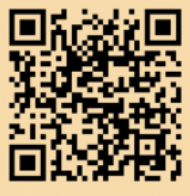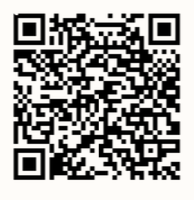How do we build a community with divergent views on Israel?
Prep for the Session
Overview
This resource engages with our relationship with Israel through the value of Hospitality.
At-a-Glance:
This resource uses the value of hospitality to invite learners to consider
the range of viewpoints about Israel that fit comfortably within one’s community, and where one might need to stretch to include more. Through an interactive prompt, it utilizes a metaphor of the bands of a rainbow to consider how we can build community with divergent views on Israel, and prompts learners to take action in stretching their individual bounds of hospitality.


- For older teen or young adult audiences
- For moments when disagreement is particularly fraught
- For small group settings with an opportunity for discussion
Let’s Get Started
FRAME THE ISSUE

Facilitator reads for framing:
There are many viewpoints about Israel in the Jewish community. Some are more mainstream–a range of views that are very supportive of Israel and its right to defend itself, perhaps also some sympathy for Palestinians, but a real hesitancy to criticize the Israeli government, especially in a moment of crisis. There are also viewpoints that are further outside the norm. The range of views – both within and outside the Jewish community – is playing out with particularly great force on university campuses across the country.
| Scan the QR code or click here to listen to a segment from PBS news hour which gives a glimpse into the divergent views on campuses. Listen from the beginning to minute 4:30. |  |

Facilitator prompts the group:
- Close your eyes and think about all the noise and divergent opinions about Israel at the moment.
- What is one feeling that surfaces for you when you do?
Facilitator continues:
If we want our own views about Israel to be accepted in our local Jewish community (e.g., Hillel, synagogue, Jewish students club), we have to assume that there will be people who disagree with us. To make space for our own views, we have to also make space for others, and ask that in exchange they make space for us.
We can’t expect all views to fit into all communities, so the challenge becomes how we negotiate our boundaries. At a certain point we need to define our community with certain boundaries — how far can we stretch and where is the red line?
Facilitator prompts the group:
• What is your most natural response when someone disagrees with you about Israel?
EXPLORE THE VALUE

Facilitator reads for framing:
The value of Hospitality, as in a hospitable environment, can offer a useful framework for how we think about cultivating a community. This is not hospitality as “hachnasat orchim,” inviting in guests, where the person doing the inviting is “at home” and plays host to a “guest”; in a community, we want every member to feel at home.
Rather, think about the world of biology and ecosystems. An environment is hospitable to certain creatures within a particular range – it might be temperature, water depth, salinity, etc. For a community to be hospitable to people with divergent views, it must decide for itself the range of inclusivity to which it can stretch. Sometimes this comes from formal, written policies; sometimes it is a more informal sense or set of cultural norms. In either case, each individual member of the community shares responsibility for maintaining the range, and also can have the power to stretch it to include marginal cases.

Facilitator prompts the group:
- What is one position or opinion on Israel that you are pretty sure is outside the bounds of your community?
- What is one that is safely inside?
- What about one that feels borderline to you, that you’re not sure if your community would or would not accept?
JEWISH ANCHOR

Facilitator has participants read the following:
Rabbi Lev Meirowitz Nelson teaches:
God gave Noah the rainbow as a sign of God’s first covenant with all of humankind. We often use the rainbow as a symbol of diversity when it comes to gender or sexuality, but what if we expand that idea further to the political? After all, the rainbow starts with red and ends with blue.
Rainbows have boundaries, as do communities. Each of us sees the world through our own “rainbow” lens, with some range of people we see as inside our community and others we see as outside.
The thing is, it’s not that the rainbow stops at its edges. It continues on, into the infrared and ultraviolet. The limitation is in ourselves, in our eyes. Even the people whom we don’t see as in our community remain people, in all their humanity. We are all just electromagnetic emanations of the Holy Blessed One.

Facilitator prompts the group:
- In your own words, summarize the key point expressed above.
- How does the metaphor of the rainbow help you think about holding divergent viewpoints at this moment?
- Consider the line: “It’s not that the rainbow stops at its edges. It continues on, into the infrared and ultraviolet. The limitation is in ourselves, in our eyes.”- In what way can you expand yourself and sense of hospitality beyond the edge of the rainbow?
– What is hard about doing so?
ACTIVITY

| Facilitator distributes the template of the rainbow. Click here to access or scan the QR code to the right. |  |
- Use the rainbow as a visual metaphor for the positions that are held in your community about Israel – those widely held and those at the margins.
- Now, think about your primary Jewish community (family, school, Hillel, synagogue, camp, etc) and the positions about Israel that are most widely held in that community.
- Label each color going from the most widely held views about Israel to those in the minority. (For each color, add a label that corresponds to the bandwidth of color.)- For example: Red represents the most widely held views about Israel in your community, and blue represents those that are in the minority.
– Do this for each color, adding the range and variety of positions held. (This does not need to be perfect. Allow the positions to emerge and move them around as needed.) - Now, think about your own personal boundaries when it comes to Israel. Where in the rainbow do they fall? (Mark yourself on your rainbow.) What are the boundaries you hold for yourself when it comes to Israel?
- Pair with a havruta/partner and compare your responses.

Prompt action

Facilitator prompts the group:
Take a moment to look at the bands of your rainbow from the activity above.
- Who falls at the lowest band, at the edge?
- What are ways you can expand your notion of hospitality to move them one band up?
- What would that take? You do not need to agree, but how might you bring them in as more intimate part of your community somehow?
- What is one commitment you can make in the coming days to stretch your own boundaries of hospitality? What is an action you will take to get you there?

Close with intention

Facilitator prompts the group:
Close your eyes and imagine, not a rainbow, but a color wheel where all colors are given equal space in the circle.
- How does this new metaphor influence the way you think about disagreement about Israel and hospitality?
- Fill in the following: I came into our conversation today thinking ____________ and now I am thinking ____________.






 Back to How do we build a community with divergent views on Israel?
Back to How do we build a community with divergent views on Israel?